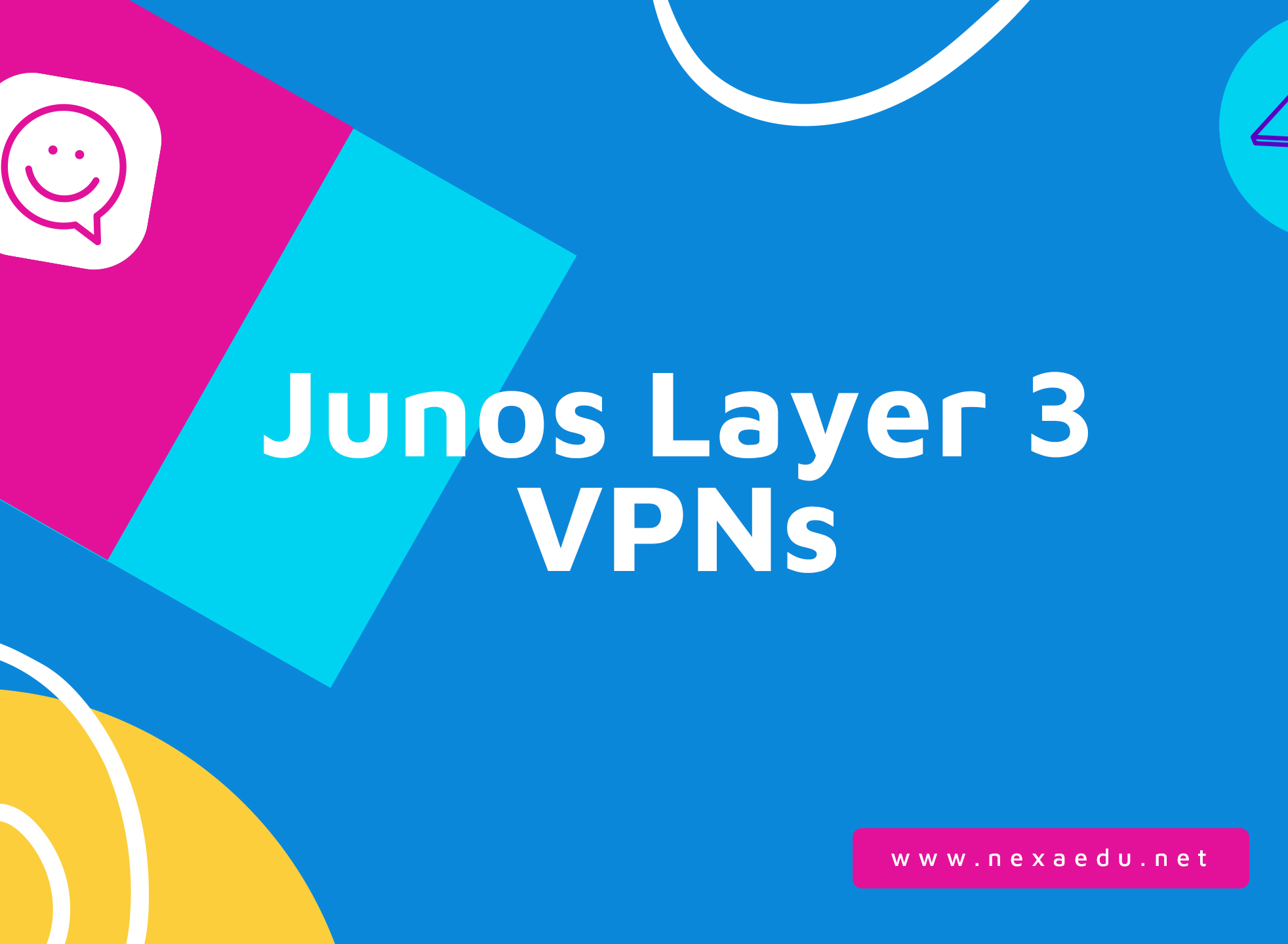About this course
Course Overview
This three-day course is designed to provide students with MPLS-based Layer 3 virtual private network (VPN) knowledge and configuration examples. The course includes an overview of MPLS Layer 3 VPN concepts, scaling Layer 3 VPNs, Internet access, Interprovider Layer 3 VPNs, and Multicast for Layer 3 VPNs. This course also covers Junos operating system-specific implementations of Layer 3 VPNs. These concepts are put into practice with a series of in-depth hands-on labs, which will allow participants to gain experience in configuring and monitoring Layer 3 VPNs on Junos OS devices. These hands-on labs utilize Juniper Networks vMX Series devices using the Junos OS Release 16.1R3.10, but are also applicable to other MX Series devices.Target Audience
This course benefits individuals responsible for configuring and monitoring devices running the Junos OS.Course Objectives
- Describe the value of MPLS VPNs.
- Describe the differences between provider-provisioned VPNs and customerprovisioned VPNs.
- Describe the differences between Layer 2 VPNs and Layer 3 VPNs.
- List the provider-provisioned MPLS VPN features supported by the Junos OS software.
- Describe the roles of a CE device, PE router, and P router in a BGP Layer 3 VPN.
- Describe the format of the BGP routing information, including VPN-IPv4 addresses and route distinguishers.
- Describe the propagation of VPN routing information within an AS.
- List the BGP design constraints to enable Layer 3 VPNs within a provider network.
- Explain the operation of the Layer 3 VPN data plane within a provider network.
- Create a routing instance, assign interfaces to a routing instance, create routes in a routing instance, and import/export routes from a routing instance using route distinguishers/route targets.
- Describe the purpose of BGP extended communities, configure extended BGP extended communities, and use BGP extended communities.
- List the steps necessary for proper operation of a PE-CE dynamic routing protocol.
- List the troubleshooting and monitoring techniques for routing instances.
- Explain the difference between the bgp.l3vpn table and the inet.0 table of a routing instance.
- Monitor the operation of a CE-PE dynamic routing protocol.
- Explain the operation of a PE multi-access interface in a Layer 3 VPN and list commands to modify that behavior.
- Describe ways to support communication between sites attached to a common PE router.
- Provision and troubleshoot hub-and-spoke Layer 3 VPNs,
- Describe the flow of control traffic and data traffic in a hub-and-spoke Layer 3 VPN.
- Describe QoS mechanisms available in L3VPNs.
- Configure L3VPN over GRE tunnels.
- Describe the RFC 4364 VPN options.
- Describe the carrier-of-carriers model.
- Configure the carrier-of-carriers and "Option C" configuration.
- Describe the flow of control and data traffic in a draft-rosen multicast VPN.
- Describe the configuration steps for establishing a draft-rosen multicast VPN.
- Monitor and verify the operation of draft-rosen multicast VPNs.
- Describe the flow of control traffic and data traffic in a next-generation multicast VPN.
- Describe the configuration steps for establishing a next-generation multicast VPN.
- Monitor and verify the operation of next-generation multicast VPNs.
- Describe the flow of control traffic and data traffic when using MPVNs for Internet multicast.
- Describe the configuration steps for enabling internet multicast using MVPNs.
- Monitor and verify the operation of MVPN internet multicast.
Course Content
Day 1 :
1 .COURSE INTRODUCTION :
2. MPLS VPNs :
- MPLS VPNs
- Provider-Provisioned VPNs
3. Layer 3 VPNs :
- Layer 3 VPN Terminology
- VPN-IPv4 Address Structure
- Operational Characteristics
4. Basic Layer 3 VPN Configuration :
- Preliminary Steps
- PE Router Configuration
- LAB: Layer 3 VPN with Static and BGP Routing
5 .Layer 3 VPN Scaling and Internet Access :
- Scaling Layer 3 VPNs
- Public Internet Access Options
- LAB: LDP over RSVP Tunnels and Public Internet Access
Day 2:
6. Layer 3 VPNs – Advanced Topics :
- Exchanging Routes between Routing Instances
- Hub-and-Spoke Topologies
- Layer 3 VPN CoS Options
- Layer 3 VPN and GRE Tunneling Integration
- Layer 3 VPN and IPsec Integration
- Layer 3 VPN Egress Protection
- BGP Prefix-Independent Convergence (PIC)
- Edge for MPLS VPNs
- VRF Localization
- Provider Edge Link Protection
- Support for Configuring More Than 3 Million
- L3VPN Labels LAB: GRE Tunneling and Route Redistribution
7. Interprovider Backbones for Layer 3 VPNs :
- Hierarchical VPN Models
- Carrier-of-Carriers Model
- Option C Configuration LAB: Carrier-of-Carriers VPNs
8 .Troubleshooting Layer 3 VPNs :
- Working with Multiple Layers
- Troubleshooting Commands on a PE Device
- Multi-Access Interfaces in Layer 3 VPNs
- PE and CE-Based Traceroutes
- Layer 3 VPN Monitoring Commands
- LAB: Troubleshooting Layer 3 VPNs
Day 3 :
9. Draft Rosen Multicast VPNs :
- Multicast Overview
- Draft Rosen MVPN Overview
- Draft Rosen MVPN Operation
- Configuration
- Monitoring
10 .Next-Generation Multicast VPNs :
- Multicast VPN Overview
- Next-Generation MVPN Operation
- Configuration
- Monitoring
- Internet Multicast
- Ingress Replication
- Internet Multicast Signaling and Data Plane
- Configuring MVPN Internet Multicast
- Monitoring MVPN Internet Multicast’
- LAB: MVPNs
Course Prerequisites
Students should have intermediate-level networking knowledge and an understanding of OSPF, ISIS, BGP, and Junos policy. Students should have experience configuring MPLS label-switched paths using Junos. Students should also attend the Introduction to the Junos Operating System (IJOS), Junos Intermediate Routing (JIR), and Junos MPLS Fundamentals (JMF) courses prior to attending this class. Recommended prerequisites:- JL2V - Junos Layer 2 VPNs
- JMF - Junos MPLS Fundamentals
Follow on Courses
The following are recommended for further study:- AJSPR - Advanced Junos Service Provider Routing
Comments (0)

0
0 Reviews





